Lingyu Yang
MiniMax-M1: Scaling Test-Time Compute Efficiently with Lightning Attention
Jun 16, 2025Abstract:We introduce MiniMax-M1, the world's first open-weight, large-scale hybrid-attention reasoning model. MiniMax-M1 is powered by a hybrid Mixture-of-Experts (MoE) architecture combined with a lightning attention mechanism. The model is developed based on our previous MiniMax-Text-01 model, which contains a total of 456 billion parameters with 45.9 billion parameters activated per token. The M1 model natively supports a context length of 1 million tokens, 8x the context size of DeepSeek R1. Furthermore, the lightning attention mechanism in MiniMax-M1 enables efficient scaling of test-time compute. These properties make M1 particularly suitable for complex tasks that require processing long inputs and thinking extensively. MiniMax-M1 is trained using large-scale reinforcement learning (RL) on diverse problems including sandbox-based, real-world software engineering environments. In addition to M1's inherent efficiency advantage for RL training, we propose CISPO, a novel RL algorithm to further enhance RL efficiency. CISPO clips importance sampling weights rather than token updates, outperforming other competitive RL variants. Combining hybrid-attention and CISPO enables MiniMax-M1's full RL training on 512 H800 GPUs to complete in only three weeks, with a rental cost of just $534,700. We release two versions of MiniMax-M1 models with 40K and 80K thinking budgets respectively, where the 40K model represents an intermediate phase of the 80K training. Experiments on standard benchmarks show that our models are comparable or superior to strong open-weight models such as the original DeepSeek-R1 and Qwen3-235B, with particular strengths in complex software engineering, tool utilization, and long-context tasks. We publicly release MiniMax-M1 at https://github.com/MiniMax-AI/MiniMax-M1.
Neural Machine Translation with Dynamic Graph Convolutional Decoder
May 28, 2023



Abstract:Existing wisdom demonstrates the significance of syntactic knowledge for the improvement of neural machine translation models. However, most previous works merely focus on leveraging the source syntax in the well-known encoder-decoder framework. In sharp contrast, this paper proposes an end-to-end translation architecture from the (graph \& sequence) structural inputs to the (graph \& sequence) outputs, where the target translation and its corresponding syntactic graph are jointly modeled and generated. We propose a customized Dynamic Spatial-Temporal Graph Convolutional Decoder (Dyn-STGCD), which is designed for consuming source feature representations and their syntactic graph, and auto-regressively generating the target syntactic graph and tokens simultaneously. We conduct extensive experiments on five widely acknowledged translation benchmarks, verifying that our proposal achieves consistent improvements over baselines and other syntax-aware variants.
HHF: Hashing-guided Hinge Function for Deep Hashing Retrieval
Dec 04, 2021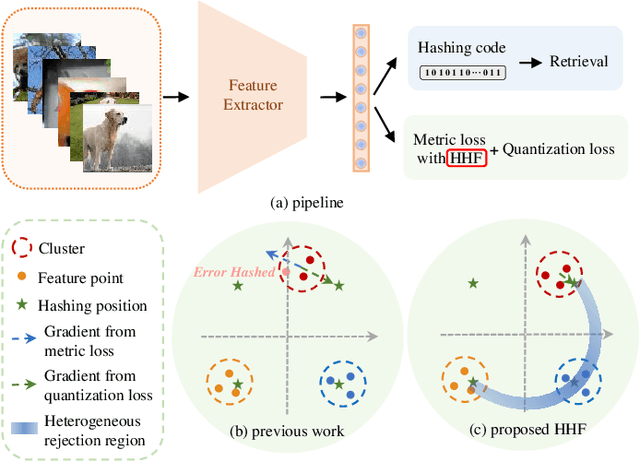
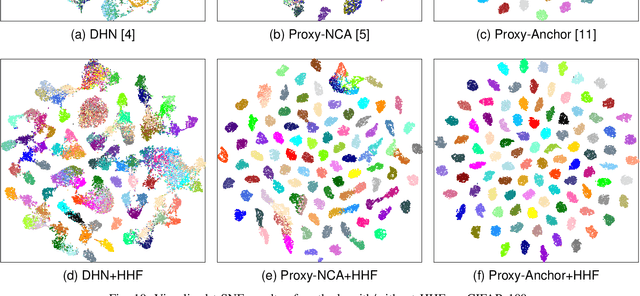

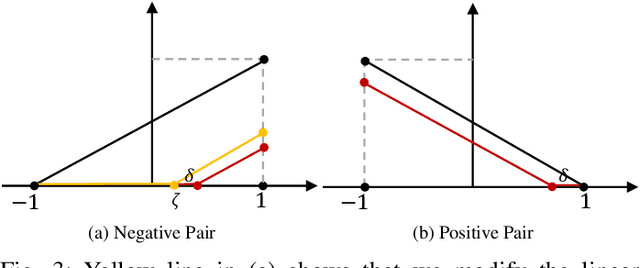
Abstract:Deep hashing has shown promising performance in large-scale image retrieval. However, latent codes extracted by \textbf{D}eep \textbf{N}eural \textbf{N}etwork (DNN) will inevitably lose semantic information during the binarization process, which damages the retrieval efficiency and make it challenging. Although many existing approaches perform regularization to alleviate quantization errors, we figure out an incompatible conflict between the metric and quantization losses. The metric loss penalizes the inter-class distances to push different classes unconstrained far away. Worse still, it tends to map the latent code deviate from ideal binarization point and generate severe ambiguity in the binarization process. Based on the minimum distance of the binary linear code, \textbf{H}ashing-guided \textbf{H}inge \textbf{F}unction (HHF) is proposed to avoid such conflict. In detail, we carefully design a specific inflection point, which relies on the hash bit length and category numbers to balance metric learning and quantization learning. Such a modification prevents the network from falling into local metric optimal minima in deep hashing. Extensive experiments in CIFAR-10, CIFAR-100, ImageNet, and MS-COCO show that HHF consistently outperforms existing techniques, and is robust and flexible to transplant into other methods.
Acoustic anomaly detection via latent regularized gaussian mixture generative adversarial networks
Feb 05, 2020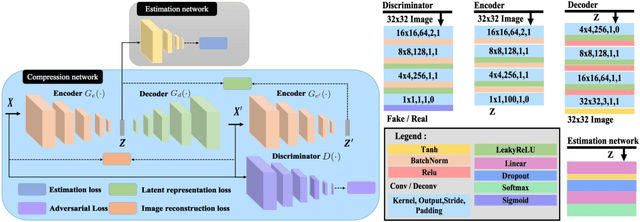


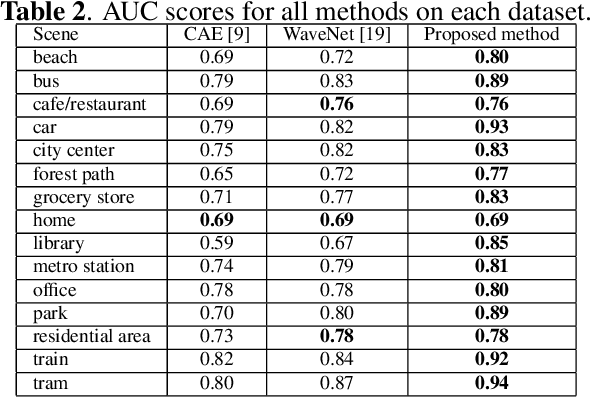
Abstract:Acoustic anomaly detection aims at distinguishing abnormal acoustic signals from the normal ones. It suffers from the class imbalance issue and the lacking in the abnormal instances. In addition, collecting all kinds of abnormal or unknown samples for training purpose is impractical and timeconsuming. In this paper, a novel Gaussian Mixture Generative Adversarial Network (GMGAN) is proposed under semi-supervised learning framework, in which the underlying structure of training data is not only captured in spectrogram reconstruction space, but also can be further restricted in the space of latent representation in a discriminant manner. Experiments show that our model has clear superiority over previous methods, and achieves the state-of-the-art results on DCASE dataset.
 Add to Chrome
Add to Chrome Add to Firefox
Add to Firefox Add to Edge
Add to Edge